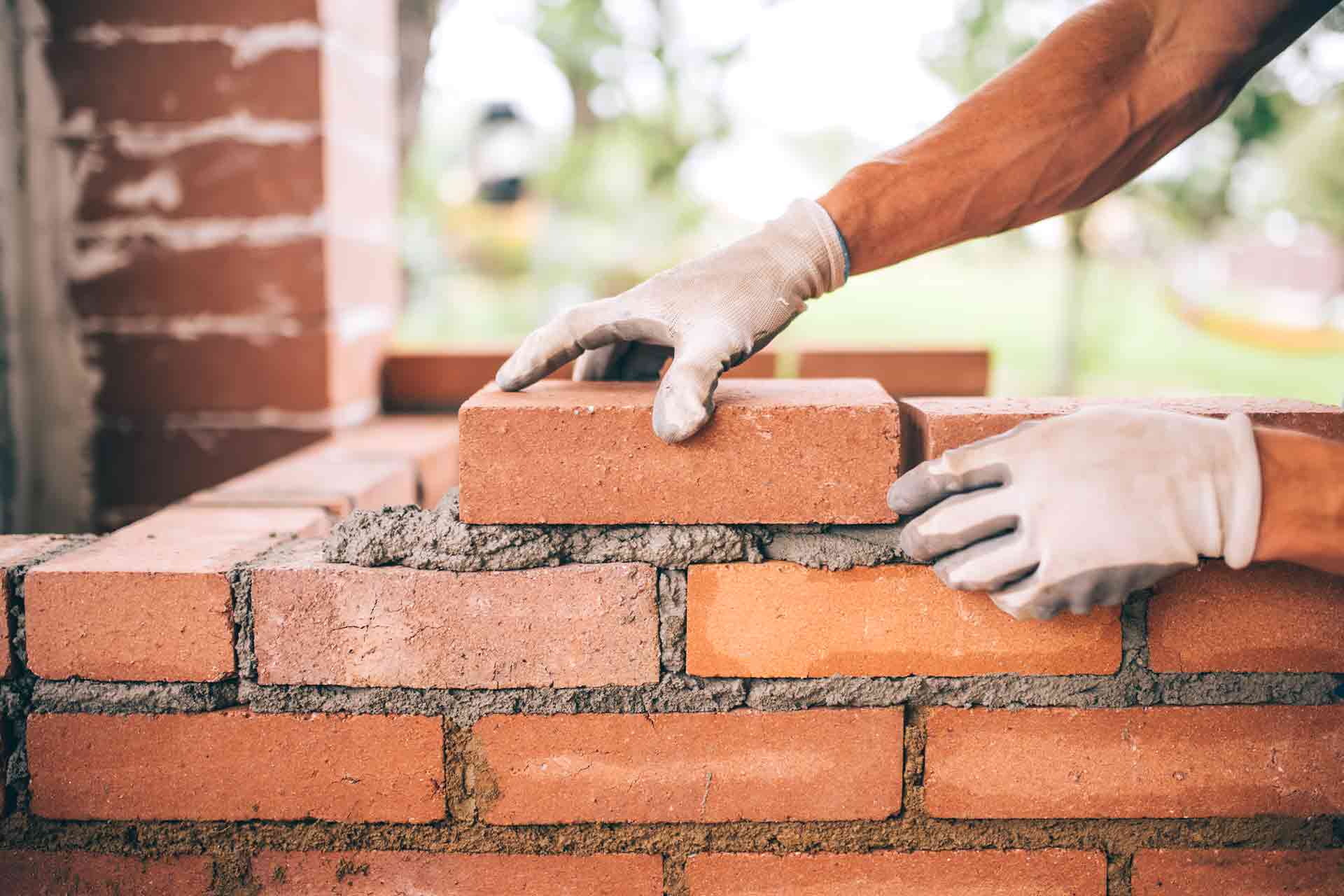Bricklayer Auckland Can Be Fun For Anyone
Wiki Article
Bricklayer Auckland for Beginners
Table of ContentsThe Single Strategy To Use For Bricklayer AucklandBricklayer Auckland for BeginnersThe Single Strategy To Use For Bricklayer AucklandMore About Bricklayer Auckland
The difference in between ZERO as well as classic stonework is in the laying of the brick. The block is no longer pressed up and down, yet tilted. No has an unique opening on the upper side of the brick. Because of this the mortar bed is reduced. It will certainly sink even deeper when the following program of blocks is laid.In enhancement, we also paid focus to a great percentage in between the size as well as size of the brick so that it is excellent for functioning with a cot bond. Bricklayers are an essential occupation in the building market, responsible for laying blocks, pre-cut stone and concrete blocks in mortar. Bricklayers construct, expand as well as fix residential as well as commercial structures, as well as other frameworks such as structures, wall surfaces, chimneys or decorative stonework.
Your time as a bricklaying apprentice will usually be split between your company and training provider (such as an university), with at least 20% of your regular functioning hours invested on training. Your training might take place weekly, every month or in a separate block of time, as well as it can take area at your workplace, at your training carrier or online.
Bricklayer Auckland - The Facts
When looking into building and construction, you inevitably discover that any kind of new or ingenious suggestion has in fact been tried over as well as over again, often stretching back decades. One of these new-but-actually-old concepts is the suggestion of a mechanical bricklayer, an equipment to automate the building and construction of stonework walls. It's easy to see the appeal of this idea - stonework building and construction appears nearly flawlessly suited for automation.It does not look like it would certainly call for literally complicated activities - each brick gets a layer of mortar used, and is just laid in place beside the previous one. And because each physical joint coincides size, placement is almost deterministic - each brick coincides set distance from the previous one.
These makers couldn't sense anything about their environment, or action where a brick required to go - they merely extruded a layer of mortar and also mechanically positioned a brick at regular intervals (Bricklayer Auckland). It's vague the amount of of these makers ever made it past the attracting board, however at the very least among these (John Knight's) was utilized to build a brick wall surface that supposedly still stands today.
Over the years, stonework has actually declined in value as a building technology in the developed world, and with it the rate of interest in automating it. Unlike with concrete 3D printing, where there are loads of efforts to create the innovation, I can just locate a handful of present efforts to automate stonework. Bricklayer Auckland.
5 Simple Techniques For Bricklayer Auckland
It's capable of putting blocks in tight see this here hallways or intricate edges, and Hadrian can create all the wall surfaces of a tiny building with just a few relocations of the lorry. Hadrian can presently establish about 200 obstructs an hour, however they're aiming to be able to do 1000 blocks an hour or more (the blocks it sets are different from the block masonry used in the United States, but in US masons can set someplace in the area of 400 blocks a day).
SAM has a series of sensors to make up for the movement of the system as well as ensure it's putting blocks degree, and click to read more can deal with blocks of all various sizes (though it won't construct CMU block wall surfaces). It obtains installed to a movable scaffolding that's elevated progressively as the wall is completed.
The marketing material on Construction Robotics' site suggests that it's no much longer their primary emphasis - more emphasis is provided to their other item, MULE.Other than SAM and also Hadrian, there are a few various other mechanical bricklayers in different phases of development. Craftsmac, a firm out of India, just recently introduced a robotic mason made use of for developing CMU wall surfaces - it appears somewhat comparable to SAM, a rolled chassis with a robotic arm, conveyor, as well as mortar mixer installed to it.

Bricklayer Auckland Can Be Fun For Anyone
A somewhat various classification of machines focused on boosting stonework productivity is what I'll call "stonework aides". These are devices designed to assist with literally raising the block (they appear to be more usual with block than block) and taking the pressure off the mason, while still enabling the mason to manipulate it right into pop over to these guys placement, Masonry aides day from at the very least 1994, when the armed forces trying out MOM, the Mechatronically Assisted Mason's Help.
Report this wiki page